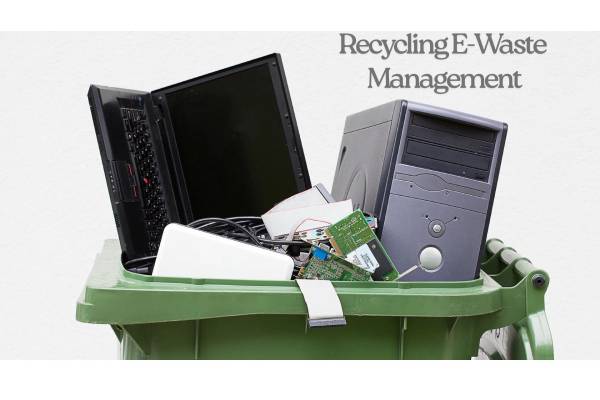In today’s digital age, electronic devices have become an essential part of daily life. From smartphones and laptops to refrigerators and televisions, technology continues to evolve rapidly. However, this rapid growth has also led to a significant challenge—electronic waste, or e-waste. E-waste refers to discarded electronic appliances that are no longer usable or wanted. Proper recycling and management of e-waste is critical to minimize environmental damage and promote sustainable development.
What is E-Waste?
E-waste includes all types of electronic equipment that have reached the end of their useful life. Common items include:
- Mobile phones and tablets
- Computers and accessories
- Televisions and monitors
- Household appliances like microwaves and washing machines
- Batteries and electronic toys
These items often contain hazardous materials such as lead, mercury, cadmium, and brominated flame retardants, which can be harmful if not disposed of properly.
The Importance of E-Waste Recycling
- Environmental Protection
E-waste contains toxic chemicals that can leach into soil and water, harming ecosystems and human health. Recycling helps safely extract and dispose of these substances. - Resource Conservation
Electronics contain valuable materials such as gold, silver, copper, and rare earth metals. Recycling allows for the recovery of these materials, reducing the need for new mining and conserving natural resources. - Energy Savings
Manufacturing products from recycled materials uses significantly less energy compared to producing from raw materials. For example, recycling aluminum saves up to 95% of the energy required to produce it from bauxite. - Economic Opportunities
E-waste recycling has the potential to create jobs in collection, sorting, dismantling, and processing. It also encourages innovation in the field of sustainable technology.
Challenges in E-Waste Management
Despite its importance, managing e-waste faces several hurdles:
- Lack of Awareness: Many people are unaware of the harmful effects of improper e-waste disposal.
- Informal Sector: In many countries, e-waste is handled by informal workers who lack the training and equipment to manage waste safely.
- Inadequate Infrastructure: Some regions lack proper facilities for collection and recycling.
- Illegal Export: E-waste is often exported to developing countries where it is dismantled in unsafe conditions.
Best Practices for E-Waste Recycling
- Awareness Campaigns
Educating consumers about the importance of recycling e-waste and how to do it responsibly is crucial. - Manufacturer Responsibility
Extended Producer Responsibility (EPR) policies require manufacturers to take back and recycle products they produce. - Certified Recycling Centers
Using government-approved or certified recycling centers ensures that waste is handled in an environmentally sound manner. - Encouraging Repair and Reuse
Promoting the repair and reuse of electronics extends product lifespans and reduces waste generation. - Proper Disposal Channels
Establishing accessible e-waste collection points in urban and rural areas can improve disposal rates.
Conclusion
Recycling E Waste Management is not just a matter of environmental concern; it’s a global responsibility. With the increasing consumption of electronics, it is essential to establish sustainable systems for e-waste management. Governments, businesses, and individuals all have a role to play in creating a circular economy where electronic products are designed, used, and disposed of responsibly. Only through collective action can we mitigate the harmful effects of e-waste and ensure a cleaner, greener future.
